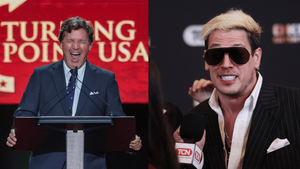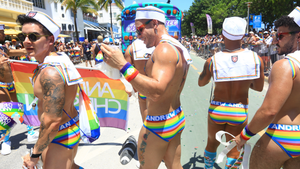All Rights reserved
By continuing to use our site, you agree to our Privacy Policy and Terms of Use.
A new study from Ragon Institute — a research group dedicated to finding vaccines and cures for HIV and other infectious diseases — suggests that if scientists can figure out how some people are able to control HIV without drugs they may be able to permanently “block and lock” HIV infection.
HIV is a retrovirus, which means it doesn’t just hijack the cell and force it to make a new virus. Instead, it buries itself into nucleus of our cells, splicing itself into our DNA. Some of these cells “remember” old infections and things that look like them. And for people on antiretroviral drug therapy, the instructions that tell a cell to make new HIV are invisible and “locked” away like a reservoir that only opens up when people stop ART, or at least, that’s how it works for most people.
But for some people, that doesn’t happen. In fact, about one in 200 with HIV remain virtually undetectable even without ever taking any ART. They’re referred to as “elite controllers.”
Two people, Loreen Willenberg of California and Esperanza Patient of Argentina, seem to have cured themselves of HIV without any medical help.
There’s a larger and uncertain number of people who have progressive HIV infections with detectable viral loads who start ART, then stop their meds for various reasons and remain undetectable for months and even years later. These folks are called “post treatment controllers.” Are there more post treatment controllers than we know of? Most people on ART medications don’t stop, but a French study suggests that it’s possible that as many as one in 14 people on ART could be undetectable if they halted their regimen.
The Ragon study found that for those able to control HIV without medication, their DNA was parked, so to speak, in “gene deserts,” which are parts of the DNA that aren’t active and never replicate. For both the elite controllers and the post-treatment controllers, the immune systems notice subtle signs of viral replication, and selectively kills the active cells, and leaves the cells with the “gene deserts” alone, scientists suspect.
In order to find out what’s going on, the Ragon study used the latest technology to do a deep genetic probe on six volunteers.
Aged 54 to 74, the two women and four men had all been on ART at least nine years, and were chosen because their samples, taken as early as 2001, were just the right sort to do this sort of deep sequencing on. And while a few had samples taken before starting ART and in one case, during an interruption, all of them had samples taken between nine and 15 years after starting ART.
Millions of cells from each patient were diluted down to several thousand per sample. And since only one in 10,000 to one in a million cells contains HIV DNA, they were able to detect it in single cells. In fact, they found HIV DNA from 1,270 very specific cells and more importantly, the majority of them were defective, incapable of creating new viruses. In fact, only 147 lengths of complete, intact HIV genome was detected across the six patients.
Researchers did find 429 cells that both produced measurable amounts of HIV DNA and were actively copying over HIV instructions, even if the instructions were incomplete.
But in addition to finding viral DNA, a testing method called the PRIP-seq can see exactly where in human genes HIV inserts itself and in seeing that, can tell if the sequence is near an “active” site and can be replicated, or has found itself exiled to a “gene desert.”
Scientists saw that not only can HIV integrate itself anywhere in the genome, proviruses were found in every one of the 23 pairs of chromosomes for each patient, and the potential of genes being active was dependent not only where the DNA was strung, but also what it was folded next to, since DNA strands are folded in intricate chains.
What all this means is that researchers think the possibility of the virus reproducing functional HIV lessens over time.
“Blocking and locking” happened in four out of the six patients, and they think this happens because even with ART, the body selects and kills the “active” HIV. For the two it didn’t happen to, the HIV DNA got into different parts of the human gene chain, and those particular parts happen to reproduce frequently.
When the cell copies itself, it copies the HIV parts, too. What all of this means is that some people are post-treatment controllers, and if so, could eventually stop taking ART. But finding out requires screening, and that screening requires the PRIP-seq test, something not available in clinics.
What comes next? The Ragon team is screening patients who’ve been on ART longterm; with careful medical monitoring, some will be taken off ART — and hopefully won’t need to go back on. They already have their first volunteer.








































































